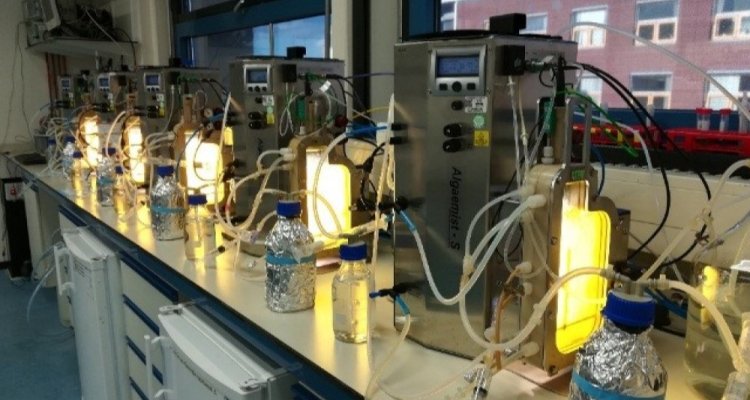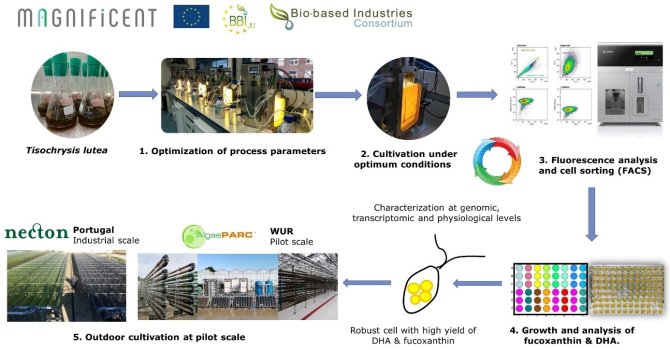
Project
Strain improvement of Tisochrysis lutea to produce fucoxanthin and DHA
This project aims to increase the productivities of fucoxanthin and DHA in Tisochrysis lutea by process parameters optimization and strain improvement.
Background
For decades, the microalga Tisochrysis lutea has been used in aquaculture as a source of fucoxanthin and long-chain omega-3 polyunsaturated fatty acid (namely, DHA). Fucoxanthin is the main carotenoid in marine brown algae (seaweeds and microalgae), playing a key role in photosynthesis with variety of biological properties such as antioxidant, antiobesity, and antidiabetic. DHA is essential in brain development and improves learning ability and serves as a therapeutic agent in the treatment of many diseases. The current production yields of fucoxanthin and DHA are still too low to make Tisochrysis lutea a competitive feedstock for these products.
Aim
Our goal is to optimize fucoxanthin and DHA production at both lab and pilot scales and to improve the productivities of these compounds in Tisochrysis lutea by selecting robust cells using Fluorescence Activated Cell Sorting (FACS).
Approach
- Process parameters optimization in photobioreactors
- Tisochrysis lutea growing under optimum conditions at continuous mode
- FACS analysis and cell sorting
- Fucoxanthin and DHA analysis of selected cells from FACS; Improved strain will be characterized at genomic and transcriptomic levels.
- Both wild type strain and improved strain will be cultivated at AlgaePARC (WUR, NL) at pilot scale and Necton (Portugal) at industrial scale.
Thesis projects
Within this project there are various possibilities for doing a BSc or MSc thesis. If you are interested in doing a BSc or MSc thesis, feel free to contact me.
